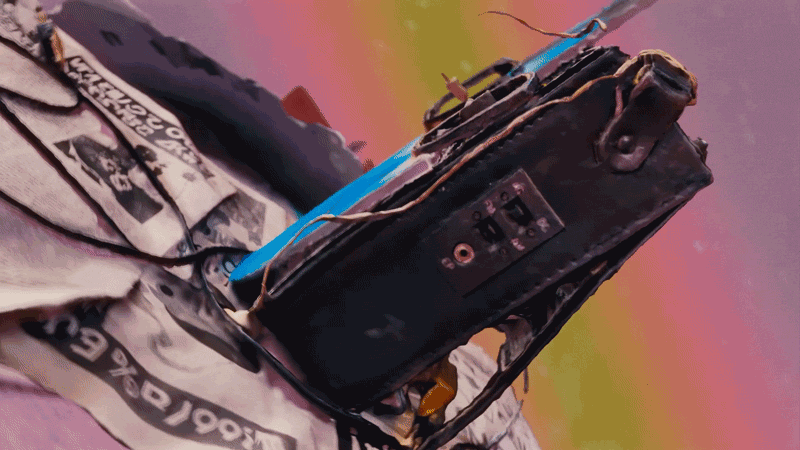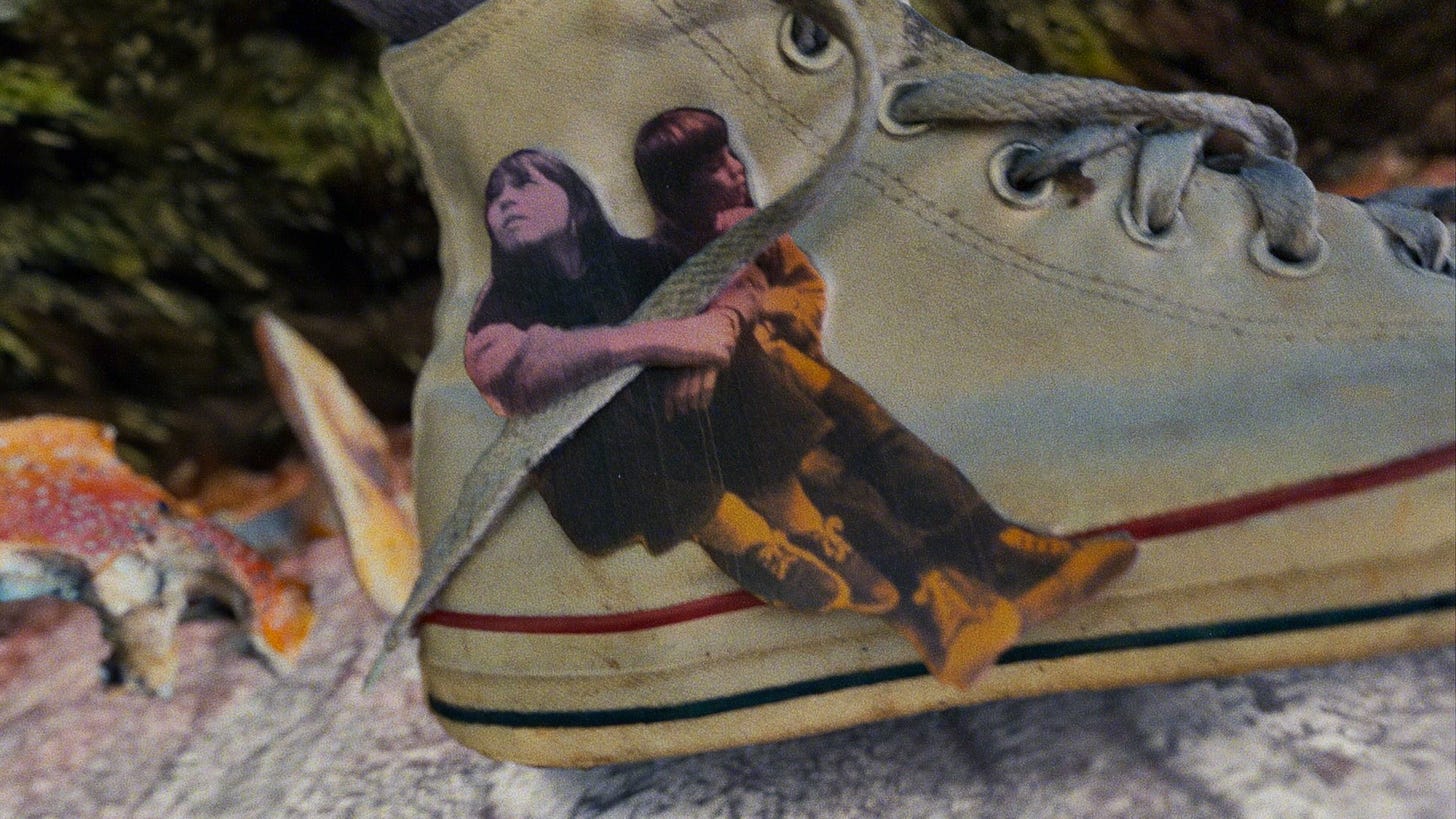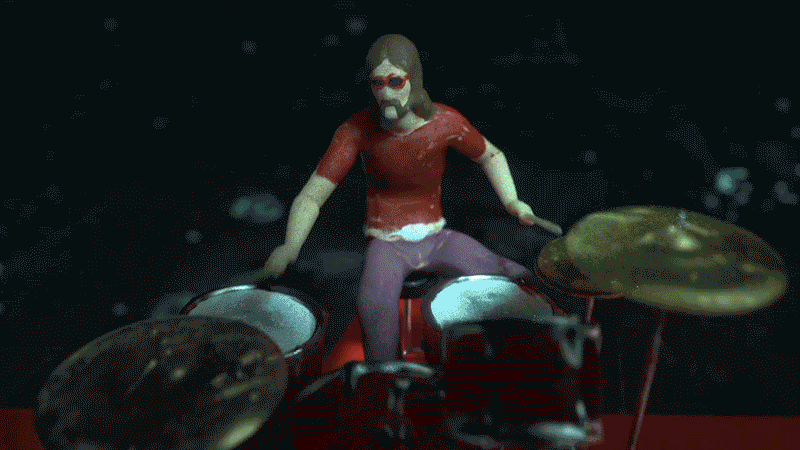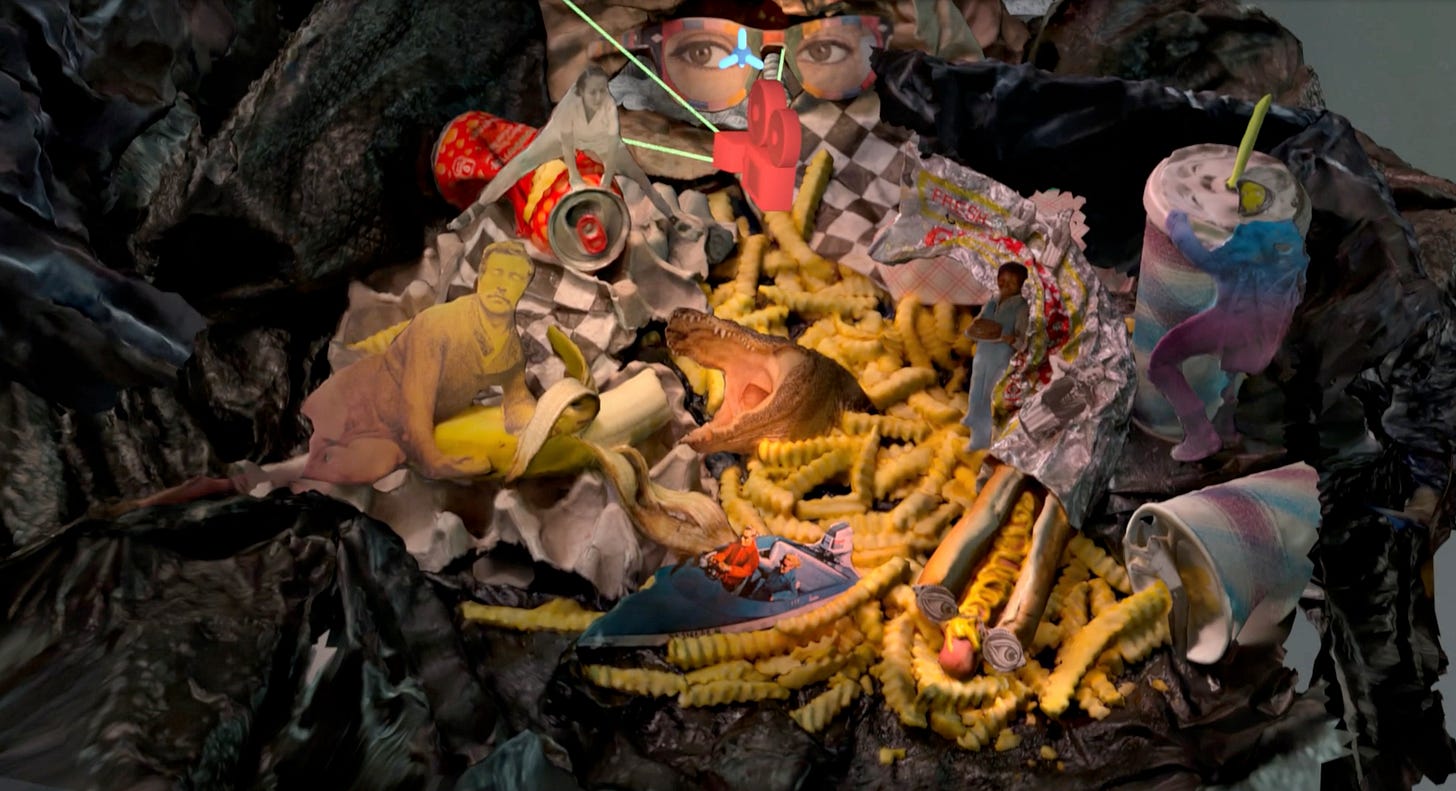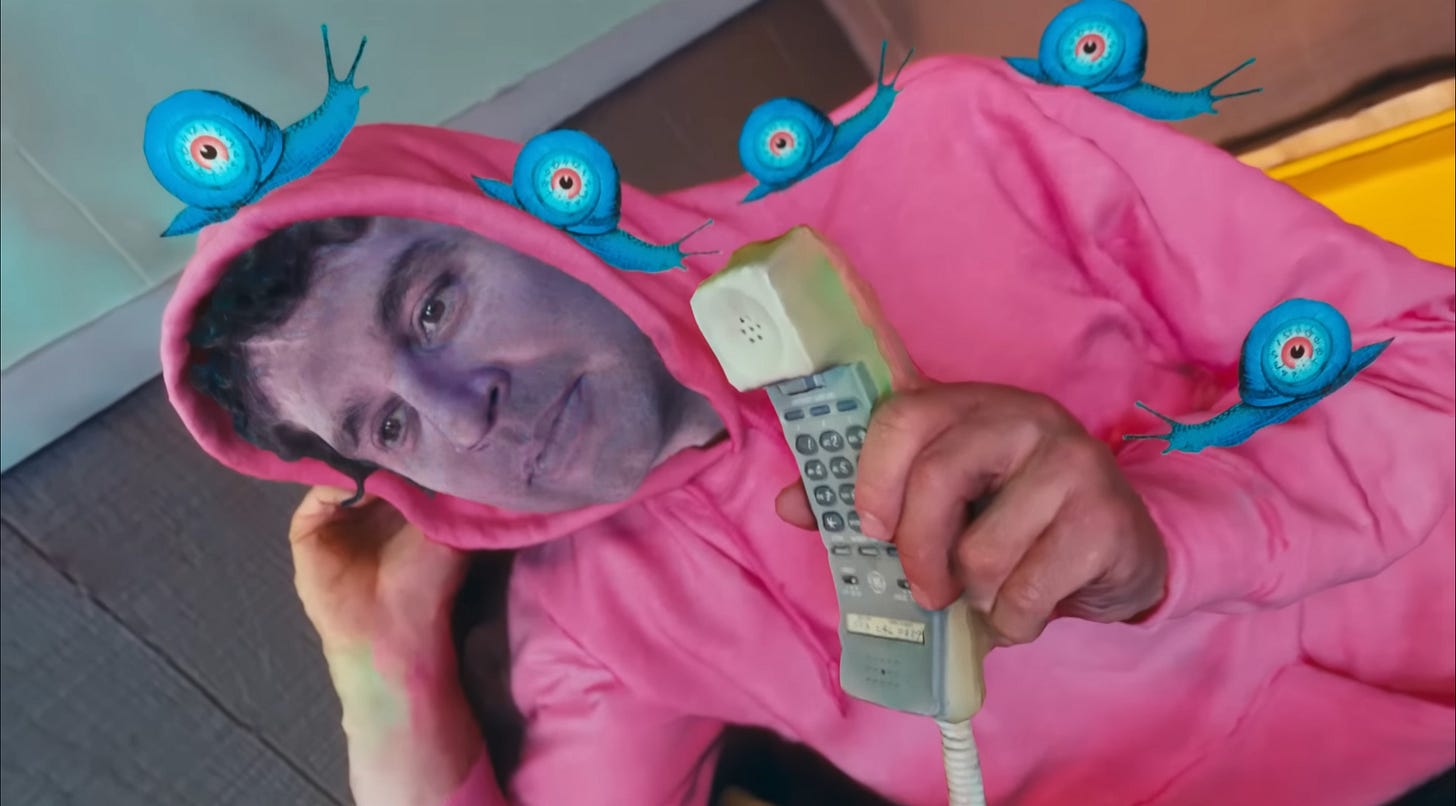Building a Collaged World for Animal Collective’s We Go Back
From paper cutouts to digital landscapes—how a collage came alive in 3D.
This conversation with co-director Michael Enzbrunner unpacks how the music video came together as an experiment in photogrammetry, collage, and the excitement of letting the process lead the way. I also speak with Avey Tare from Animal Collective, who shares how collage, memory, and texture shape the band’s music, and how the video fits naturally into that world. You’ll find Michael’s interview first, followed by a separate Q and A with Avey.
Origins & Collaboration
Winston: Domino Recording Company reached out to me about directing We Go Back, and I immediately thought of working with you. Do you remember those first conversations we had about how this could work?
Michael: I recall you were experimenting with 3D scanning objects and characters and approached me to turn your collages into 3D sets for a roaming camera to explore. The idea of creating collaged environments from scanned collages hooked me right away, since miniatures and world-building have always been a passion of mine. We tossed around some ideas, discussed certain locations and details that could look cool in the video, and hashed out some technical aspects for our low-tech approach using just an iPhone, Mac Mini, and Blender.
Winston: We didn’t start with a finished concept, we built it together scene by scene. From your side, how did the idea take shape?
Michael: Early on, after a proof-of-concept shot, we decided storyboards and animatics didn’t make much sense. Instead, we let the visuals evolve in sections and layers, more like how a band might write a song. A sound becomes a melody, gets echoed, layered, looped, or cut—kind of like visual jazz. One thing we definitely wanted, was to keep the viewer guessing by not revealing where the camera was heading. While the motion was mostly forward, we explored the world through a rearview mirror, which became our strongest visual guide, matching the song and its lyrics.
Winston: You’d seen my Polycam collage experiments before so what made you think they could translate into a music video?
MIchael: I’ve always been into music videos—they’re probably why I got into animation and computer graphics in the first place. When I saw your collages translate from 2D into 3D space, they immediately felt perfect for creating and populating a world for a short film or video. The scanned collages retain their analog texture qualities and don’t look like typical CG—something that instantly creates a spark and invites play and exploration.
Winston: Had you been familiar with Animal Collective’s music before this, and did that influence your approach?
Michael: Animal Collective popped up on my radar with Merriweather Post Pavilion, and I’ve dipped into their catalog and solo projects since. We approached ‘We Go Back’ with a clean slate though, trying not to let their past work sway us too much. But since they lean toward psychedelic and weird visuals, I felt confident we could make something work that would fit their vision and taste.
Creative Freedom & Band Involvement
Winston: Early on, I got on the phone with Avey Tare to explain that we didn’t really know what the final video would look like, but that we wanted to approach it like a jam session—just building and experimenting. Once you knew the band was on board with that, did it change how far you felt we could push the visuals?
Michael: For me, our loose approach wasn’t about pushing the visuals as far as possible, but about letting go of rigid workflows. It was freeing to embrace imperfections for the sake of the flow. It kept an element of surprise and playfulness for myself, not always knowing what was around the next turn until the camera got there.
Winston: In your opinion, what’s the advantage of having the artists themselves understand and embrace the process before we start production?
Michael: Our approach wouldn’t work for every animation project, but it was a great way to rethink how to tackle a production and trust years of combined experience. Being overly prepared can check all the boxes but lose the raw ease of the initial idea. On the other hand, being underprepared can spark anxiety. For this, we had a balanced mix of technique and confidence in the vision. Roadblocks are unavoidable, but I knew we’d find solutions from a range of endless possibilities. Of course it greatly helps when there’s no creative restraint and you can try pretty much anything.
Technical & Artistic Process
Winston: You’d already done photogrammetry work in your short film Death Van. How did that experience feed into what we were doing here?
Michael: I’ve never seen photogrammetry as a way to mimic reality or go photorealistic. To me, it’s about quickly creating assets and making them work as a set through arrangement and lighting. Since we agreed early on to embrace the roughness of the 3D scans and not obsess over cleaning up geometry, this felt pretty much like a natural extension of how I worked on previous personal projects.
Winston: We were dealing with a lot of unpredictable Polycam scans from my phone. How did you go about turning that raw material into a coherent world in Blender?
Michael: As I mentioned, we kept the scans rough and didn’t focus on making things technically pristine. Once you load assets into the 3D software, it’s like playing with a giant virtual LEGO set. You scale, rotate, and move things until something clicks, then keep building from there. There was no strict plan. Sometimes a single light or object placement would set a mood, and you’d chase that direction. In a way it complemented the collage process of the assets themselves.
BTS: A camera pass through our photogrammetry world in Blender.
Winston: Were there any creative decisions you only made after seeing the scans come to life in motion?
Michael: This is mostly true for the camera work, since it’s a constant balancing act of scale, speed, time, distance, focus and composition. They all feed into each other and shape the next move, so there was a lot of tweaking to get the right effect.
Winston: Did the way we layered and arranged the visuals feel a bit like making music—looping, reacting, and improvising as we went?
Michael: Totally. Every part of this project felt fresh and surprising in a good way. Animation is usually so planned out and you mainly execute a blueprint, but we flipped that on purpose. Bouncing ideas back and forth felt like building melodies or structures within the song’s own framework.
On Location & Source Material
Winston: We scanned some pretty wild locations so i want to know what were your favourites, and why?
Michael: Each part of the song has its own location, and I truly like them all—they fuelled my imagination to build and explore further. If I had to pick a favourite though, it’d be the inside of the trash can. There’s so much cool stuff happening—crazy textures, shapes, patterns and of course the hot dog with eyes turning into a mustard slide.
Winston: Yeah that set was built entirely on my kitchen table! Were there any objects or textures you knew right away had to become focal points in the video?
Michael: Most major assets felt important and needed the right exposure to fit the flow and composition. The key objects pretty much revealed themselves, making it clear where they should go without overcrowding the space.
Winston: Did any unplanned glitches or scan “errors” end up making the cut?
Michael: Haha, pretty much all of them. Lots of chopped-off scan bits were deliberately placed to fill gaps. Without those rough chunks, there’d be weird holes everywhere in the environments.
Q and A with Avey Tare
Winston: What first drew you to working with collage and found imagery for We Go Back?
Avey: I’ve always loved different forms of collage, visual and musical. I think collage is a medium or style that has always suited Animal Collective. I think collage is a really interesting way of personalizing things, because you’re bringing different elements together under the guise of your own taste and vision.
Winston: How do you think visual collage connects to the band’s way of layering sound and memory?
Avey: In the grander scheme of things all AC music is a collage of sorts. We’ve always brought together different kinds of sounds and styles and “pasted” it all together in a sense. Sometimes it’s rougher around the edges than other times. Memory can definitely involve collaging different moments together to make one whole “new” memory. It’s something we all do. For a lot of people this memory even becomes a reality (or past that actually happened).
Winston: Do you see parallels between collage animation and how Animal Collective builds songs?
Avey: Definitely. Sometimes it’s more overt in terms of the music. Sometimes we want the listener to hear the collage elements and it can feel like we are cutting and pasting in real time. At other times we want the collage element to be more transparent. But like I said before, there is an element of collage in all of it. There’s a sense of collage in most modern music today in my opinion. We are surrounded by so much content these days, even just on social media. For a person like me, that all sinks in and is “collected” and spit out in some new collage of things.
Winston: How do you approach the process of trusting a director with your music, especially when the visuals might reinterpret or diverge from your original intent for the song?
Avey: Well first thing, I really like that our songs can be interpreted in many different ways and become personalized by the ears of the listener. It’s the same thing as us trusting each other (in AC) with the musical content. I want to play with those guys because I appreciate what they bring to the overall sound. So a director becomes a part of Animal Collective in a sense. I feel that way about everyone we work with. We just trust that a director understands and feels a specific way about the tune. It’s definitely really important that a director responds to the music and digs it.
Winston: For aspiring music video directors out there, what do you look for in an animator or director’s body of work?
Avey: I feel like I look for a unique vision. I look for someone who’s expressing themselves, not just doing a job. Not just topically but texturally as well. So much digital content looks the same. I think there needs to be more criss-crossing of mediums. I also like imperfections. Animal Collective at times has been a big musical mess and I appreciate visual messes as well. I usually appreciate things more when I can see the physical work that went into it.
Winston: Were there moments where you felt the visuals and the music were “in sync” emotionally rather than rhythmically?
Avey: I think the magic happens in those moments, and yes, I definitely see it happening in this video. I appreciate when a director can involve us in the video in an interesting way. It’s hard to find a band just playing a song in a video very captivating anymore, but I think it’s cool to be in the videos sometimes. When it’s done right it enhances the emotion I feel for it at least.
Winston: What was your reaction the first time you saw the completed video?
Avey: Big smiles the whole way. Happy because I hadn’t really seen anything like that before and you (Winston) had talked about it like it was new territory. I was psyched that the vision was actually made possible. But also it just felt like the perfect video for the song.
Winston: What part of the video surprised you most, something that maybe wasn’t planned but worked well?
Avey: Again I think the way we were incorporated into it was the most surprising. Very subtle, which is how I would like it to be haha.
You can watch the complete We Go Back music video by Animal Collective, as well as Michael Enzbrunner’s short Death Van, below.


